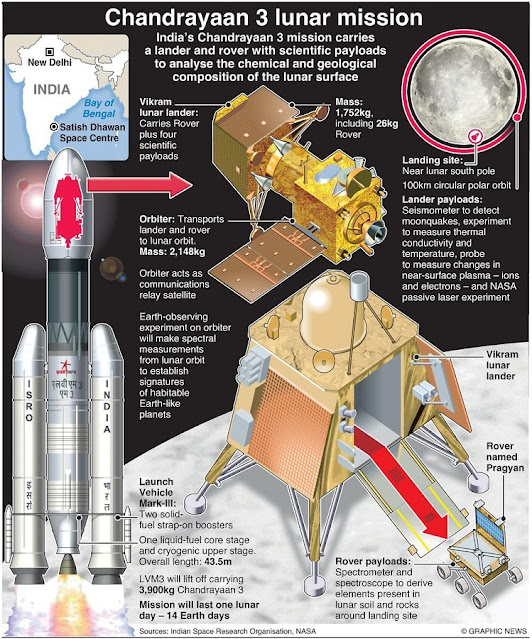In what may be the most unexpected story I've ever written, start with Brian
May, guitarist most famous for his years with the world-famous group Queen and
voted the greatest guitarist of all time by the readers of Total Guitar
magazine earlier this year. Then add NASA's asteroid-sampling OSIRIS-REx
mission and their chief scientist Dante Lauretta. Mix well, and the two
have collaborated
on a book about the target of the mission, collecting rock samples from
asteroid Bennu, in October 2020.
If I mix in a fact that I'm sure some of you know: Brian May is Dr. Brian May, Ph. D. in astronomy, it's quite a bit less shocking but it's still the Story of the Day/Week/Month.
May, who holds a PhD in astronomy, had previously collaborated with the science teams behind Europe's comet-chasing Rosetta probe and NASA's Pluto explorer New Horizons. He joined the OSIRIS-REx team in January 2019, a few months after the probe reached its destination, after striking up a friendship with Lauretta over shared interests. But Lauretta, although a lifelong Queen fan, said he wasn't interested in having a free-loading celebrity on board just for publicity and expected the rock star to earn his keep.
It turns out May was perfect choice for the mission because of his interest is stereoscopic imaging of things like asteroid Bennu. Ordinarily, stereoscopic imaging is done with stereoscopic cameras; two cameras spaced apart so that their output could be combined into a single 3D image - when viewed with 3D glasses. The problem was that OSIRIS-REx wasn't equipped with a stereoscopic camera. This is where May comes in.
May, however, knew a way around this limitation, as he had previously produced 3D images of Comet 67P, the target of the Rosetta mission, and of Pluto as seen by New Horizons, by carefully selecting and aligning images taken by a single camera from different angles.
OSIRIS-REx, was the first probe designed to take samples of an asteroid and the predominant model for smallish asteroids like Bennu was that they were chunks of some bigger body broken apart by collisions over the vastness of time. It didn't take long after the first images started coming back to realize this was very, very wrong, and not what the mission was designed for. Instead of mostly smooth, beach-like plains of sand occasionally strewn with smatterings of bigger rocks, they found a body covered in boulders that sometimes rose against the asteroid's barely existent gravity in formations tens of feet tall.
The van-sized spacecraft had been designed to land in a smooth area at least 25 m wide, but the images quickly revealed that there was no such open space on the spinning-top-shaped Bennu, and the team faced the very real possibility that the mission might not accomplish its main goal. May and his collaborator Claudia Manzoni sat down and went through photos of tens of shallow craters that pockmark the face of Bennu in an effort to find one large enough and boulder-free enough to allow the sampling.
But the effort paid off. Two craters were eventually deemed good enough to host a landing attempt. The first of the two, called Osprey, was the site of choice of the spacecraft engineers, as there were fewer potentially dangerous rocks scattered around its rim, Lauretta said at Thursday's event. The other, Nightingale Crater, was the scientists' favorite, as its color indicated an abundance of ancient regolith, which, the researchers hoped, held a record of the space rock's past — and that of the entire solar system.
The immediate problem was that neither of the two sites was the 25m width the probe was designed for. Osprey is 6 m wide, and Nightingale is 8 m.
Eventually, science won, and Nightingale was selected despite a massive boulder nicknamed Mount Doom looming at its edge. After careful preparations, in October 2020, engineers were finally confident enough to command OSIRIS-REx to perform the landing maneuver. And then Bennu delivered yet another surprise.
"We expected the surface to be pretty rigid, kind of like if you touch down on a gravel pile: a little bit of dust flying away and a few particles jumping up," Lauretta told Space.com last year.
"But as we were bringing back the images after the event, we were stunned. We saw a giant wall of debris flying away from the sample site. For spacecraft operators, it was really frightening."
In the wake of other missions to small asteroids like Bennu by Japan's Hayabusa missions to the asteroids Itokawa and Ryugu, along with last year's DART mission to asteroid Didymos and its "moon" Dimorphos, the view of these asteroids has shifted to being that they're piles of rubble; conglomerates of fragments from past collisions held together by the very weak gravity of all of the fragments for each other. How weak? In the images taken after OSIRIS-REx collected its sample, Brian May said, "You could see boulders rolling uphill on Bennu."
A stereoscopic image of asteroid Bennu that allows viewers to see the surface in three vivid dimensions when viewed through 3D glasses. Without 3D glasses, I can see this in 3D by crossing my eyes until the images fuse into one. I concentrate on that big rock in the middle. If you remember the brief fad for random dot stereograms in the late 1980s, I picked up that trick back then.





















